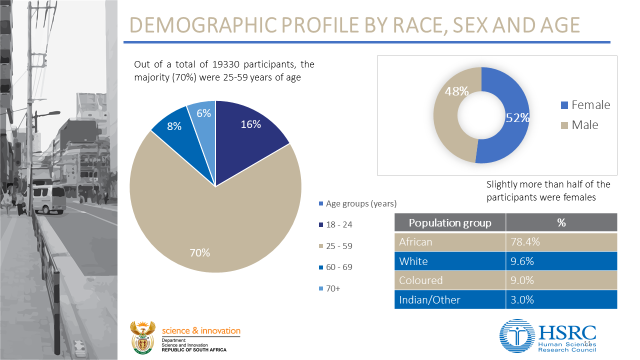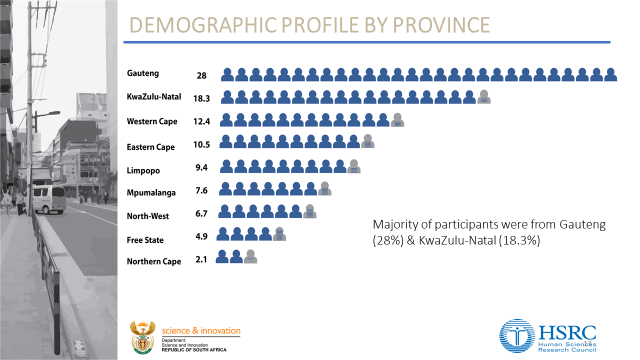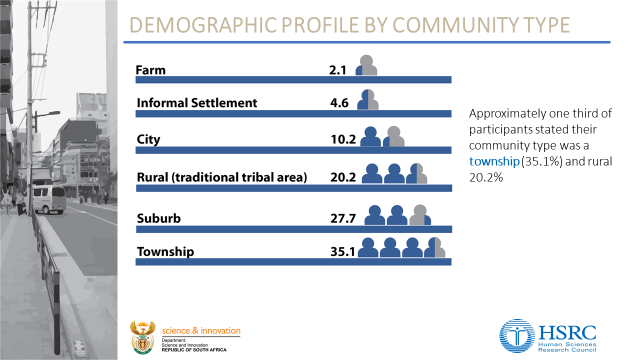Charts & Statistics: S.Africa: Dumb Lockdown: 24% of people did NOT have money for food – including Whites
(005875.811-:E-000062.43:N-AC:R-SU:C-30:V)
[Quite a lot of people in South Africa did not have money for food during this ridiculous lockdown. I have heard that quite a lot of old white people did not have money for food and people had to try and get to feed them. That's how insane this stuff is. As for the idiocy of having to wear masks. Well, that's another bit of stupidity. Jan]
HSRC survey finds 24% of residents had no money to buy food – Blade Nzimande
Blade Nzimande |
28 April 2020
Minister says 13.2% of respondents indicated that their chronic medication was inaccessible
Minister Blade Nzimande: Public perception survey on impact of Coronavirus COVID-19 on South Africans
26 April 2020
The Minister of Higher Education, Science and Technology Dr Blade Nzimande today announced the results of the survey conducted by the Human Sciences Research Council of the impact and awareness of the coronavirus amongst South Africans that is currently sweeping across the world, including the country.
The survey comes amidst the unprecedented spread of the virus across the world which necessitated that South Africa implement a lock down from 27 March to 30 April to impede the spread of the virus and the rates of infection.
The survey, was conducted in two waves. The first, conducted from 27-31 March looked primarily at awareness levels and knowledge about the virus. The second, conducted form 9 April – 16 April, looked primarily at the impact of the lockdown on South Africa.
The survey was conducted on the #datafree Moya Messaging social media platform and reached 19 330 respondents. The Moyo Messaging platform was chosen because of its large user base of about four million members and one million daily engaged users.
With a view to reaching the required respondents, the HSRC worked with a range of partners, including, the University of KZN, SAPRIN (Agincourt), Walter Sisulu University, NIHSS and Acumen Media.
Why the survey
Although the global community is learning about the virus and its behaviour on a daily basis, it has been shown that due to its highly infectious nature, the best way to protect oneself from infection is social distancing and the regular washing of hands and cleaning of surfaces.
This will require behaviour and attitude changes. South Africa’s experiences with HIV and AIDS as well as TB has shown that the most resilient behaviour changes will be built upon an evidence based understanding of the diseases and what will be required in terms of behaviour, attitude and perceptions changes to turn the tide of the infection rate.
The study therefore sought to mine data that will lead to a context-specific health and wellbeing frameworks required to address individual, family, community and society at large at primary prevention, early detection and patient care levels as well as long-term mitigation of the impact of the pandemic.
How the survey was conducted
The HSRC’s research response to the COVID-19 outbreak employed a mixed methods approach with:
Quantitative studies – panel surveys conducted online and telephonically. This included interviews with, amongst others, teachers, shebeen owners and sex workers
General population survey 1: Socio-behavioural survey
General population survey 2: Lockdown survey
Healthcare workers psychosocial wellbeing survey
Study sample
The sample included South Africans of all race groups aged 18 years and older, including healthcare workers. The data was benchmarked (weighted) to the distribution of South Africa’s adult population using the mid-year adult population estimates from Statistics South Africa by age, sex, race, and province. This allows the data to be generalisable to the country.
In respect of the second wave of the survey, of a total of 19 330 participants, the majority (70%) were between 25-59 years of age; 52.1% were female and 48% were male; 78.4% were African, 9.6% white, 9% coloured and 3% were Indian/other.
In terms of the employment profiles of the respondents: 36% of participants are unemployed, 10% had informal/part time work, 9% were self employed.
The majority of the respondents were from Gauteng (28%) and KwaZulu-Natal (18,3%).
Approximately one third of participants stated their community type was a township (35.1%) and rural residency accounted for 20.2%.



Key findings
The majority of people adhered to the regulations: the results show that 99% either left their homes for food, medicine and social grants or stayed home. Thirty percent (30%) had not left home since the start of lock down and 62% had left to get food and/or medicine.
Contact with people during the lockdown: only 20% of the respondents indicated that they had not left home, 8% had met with more than 50 people. Fifty one percent (51%) of people reported that they came into close contact with 10 or more people during the past 7 days when out of their homes. Fifteen percent (15%) had to use public transport to get to the shops.
Risk perception: 1 in 2 people indicated a sense of security and so they perceived themselves to be at low risk, only 1 in 5 people believed that they are at high risk of infection
Access to food: Just under a quarter (24%) of residents had no money to buy food. More than half (55%) of informal settlement residents had no money for food. About two-thirds of residents from townships also had no money for food.
Access to chronic medication: Approximately 13.2% of the population indicated that their chronic medication was inaccessible during the lockdown. Approximately 13%-25% of those living in informal settlements, rural (traditional tribal areas) and farms indicated their chronic medications were not easily accessible.
Financial impact of the lock down: Between 45% and 63% of people reported that the lock down would make it difficult to pay bills, debts, earn income, feed their families and keep their jobs. Additionally, 26% of people reported that they had no money for food.
Access to alcohol and cigarettes during the lock down: Cigarettes (11.8%) were more accessible than alcohol (2.5%) during lockdown. A quarter of people from informal settlements were able to buy cigarettes during lockdown.
Experience with law enforcement: the overwhelming majority of residents (75%) had no interaction with law enforcement, 14.7% of the residents indicated that they were treated badly
The way forward
The results indicate the opportunities for a stronger behavior change communication campaigns
As we lift the lockdown, preventive behaviour change messages have to be intensified and South Africans need to be encouraged to take responsibility for their own behavior. Targeted, tailored and culturally appropriate messages need to promote voluntary behavior actions (hand washing, social distancing and masks)
South Africans need to disrupt their social relations and activities in order to save lives, by adopting social distancing. Anyone can be infectious with or without symptoms, so everyone has a duty to protect others by wearing a mask whenever out of one’s home.
The message for public transport is to disinfect taxis, trains, buses and any other forms of public transport and ensure the use of masks and social distancing inside the taxis and at taxi ranks.
We need to build a social compact to create a new model between the health care system and the local community at municipal level. The message is to take the medicines to the home. Learn from the Cuban experience.
Government and society as a whole should acknowledge that some communities are struggling and people may have no money to buy food. A social compact must be created with communities and the public and private sector, to ensure sustainable financial and social relief. This should include promoting intergenerational cohesion and sustainable food banks at the level of the district.
Tobacco control interventions must be put into place to prevent illicit trade and smuggling. The results also call for better regulation of tobacco sales in informal markets.
We need to provide clear guidance and support to people so that they are able to adhere to regulations and acknowledge that it is difficult for people to make these major changes willingly in order to protect their families and communities. Law enforcement should be provided with clear guidelines and support to enable them to deal with intentional violators and risk takers
Video & Audio: What are the biggest FAULTS and WEAKNESSES of the Race?
After a LOT of thought, for a long period of time, these are my thoughts on our biggest faults and weaknesses as a race. As far back as 2022, I was giving this a lot of thought for a video. You might be surprised by my conclusions.
White Shop: Hitlers Revolution: Ideology, Social Programs, Foreign Affairs
Drawing on over 200 German sources, many pre-1945, Hitlers Revolution provides concise, penetrating insight into the National Socialist ideology and how it transformed German society. The governments success at relieving unemployment and its social programs to eliminate class barriers unlock the secret to Hitlers undeniable popularity.
Kenya: Witchcraft: The devil told me to have sex with sheep
Witchcraft is rampant across Africa. This story is incredibly weird and bizarre. Other Blacks said this Black guy was also having sex with a dog. This story makes for some insane reading. I published this on my old website.

